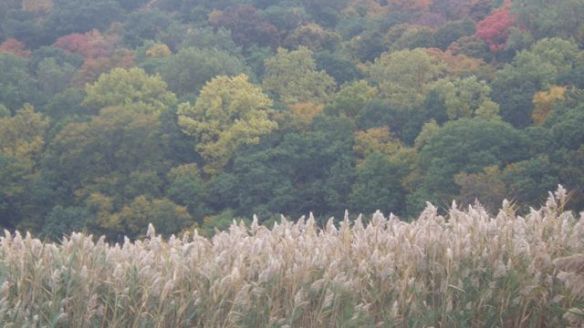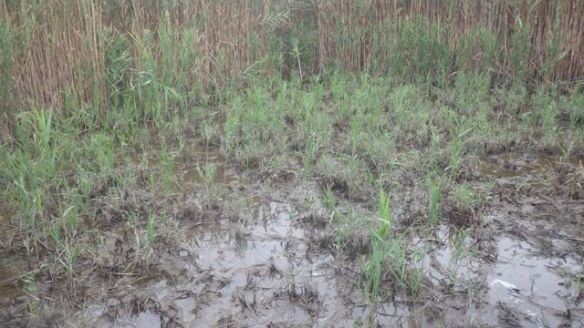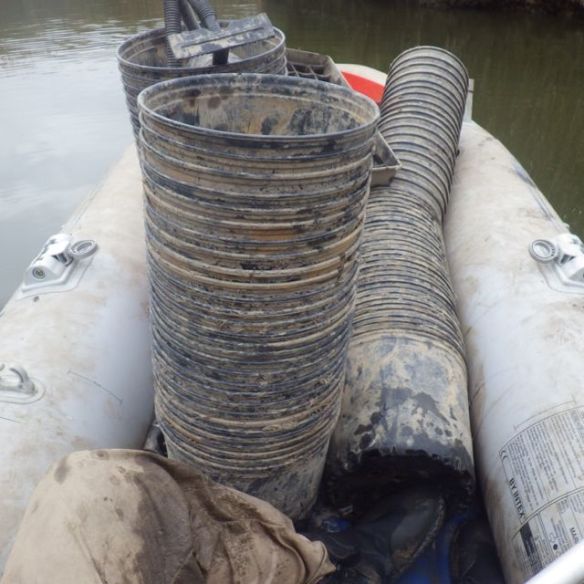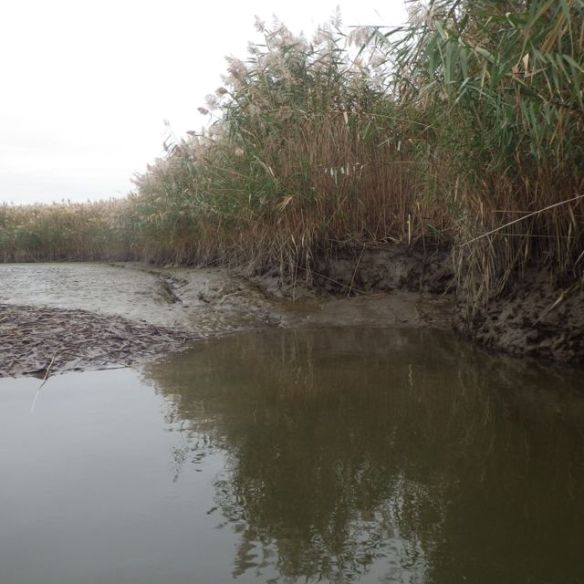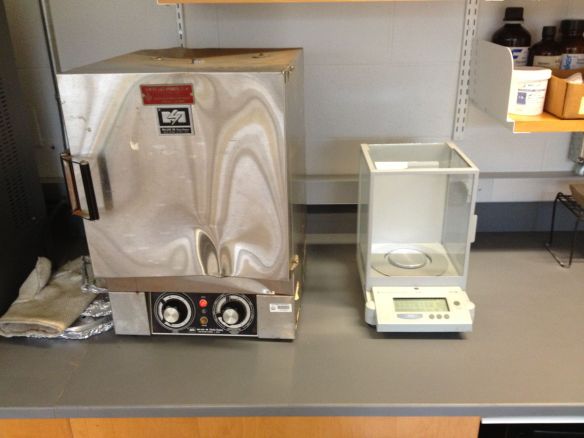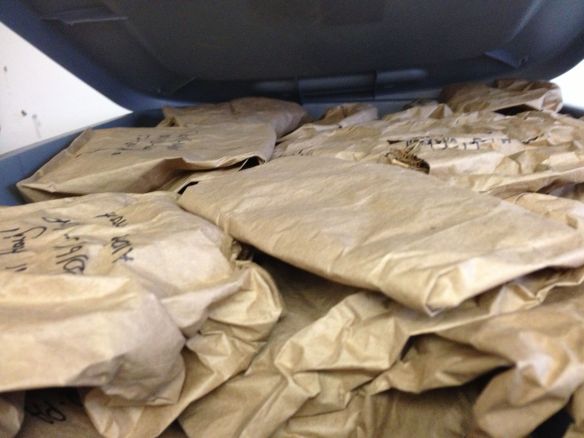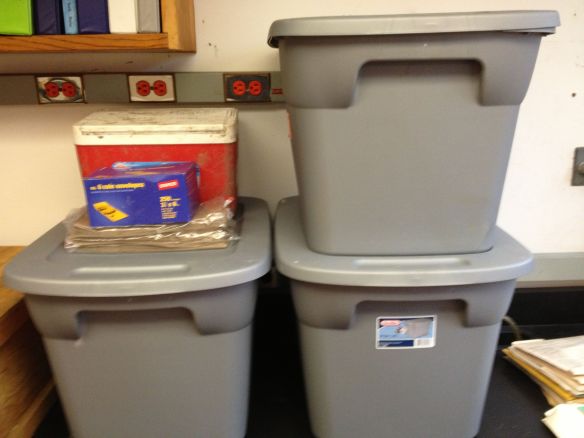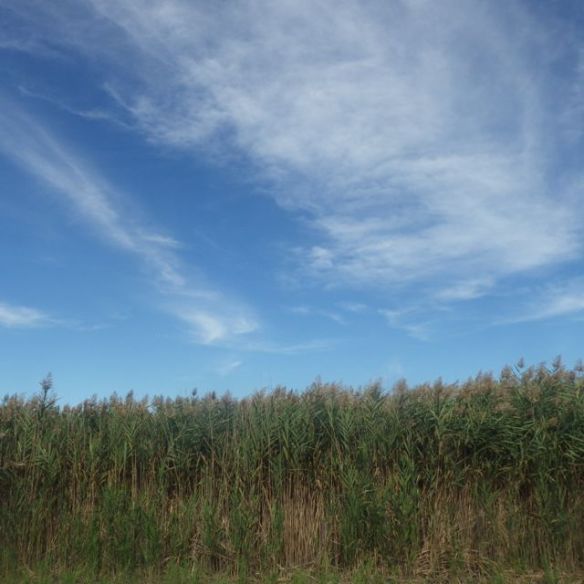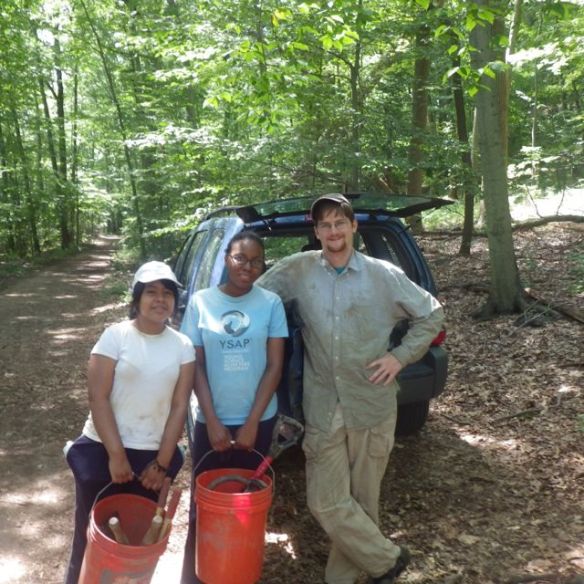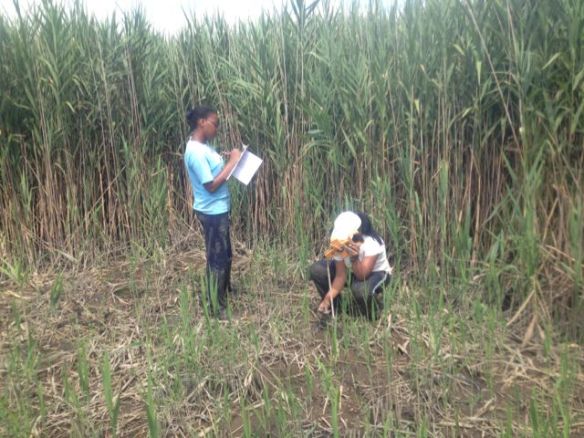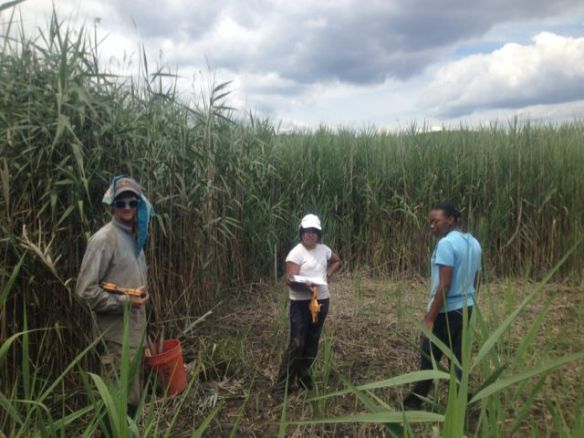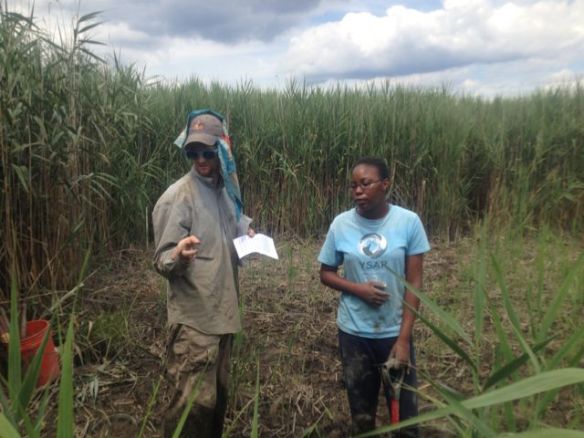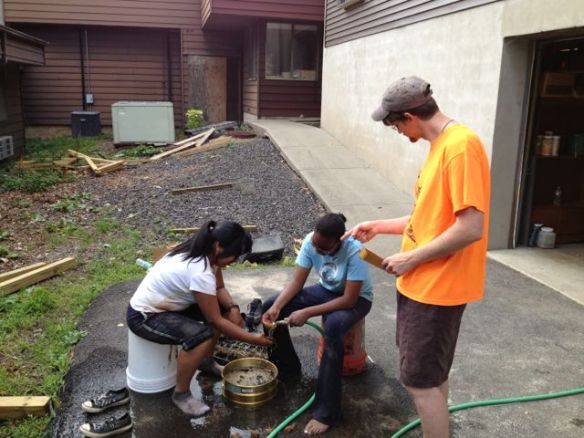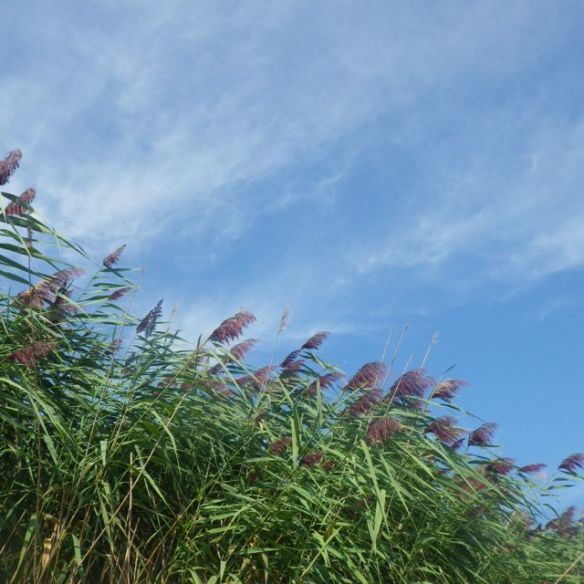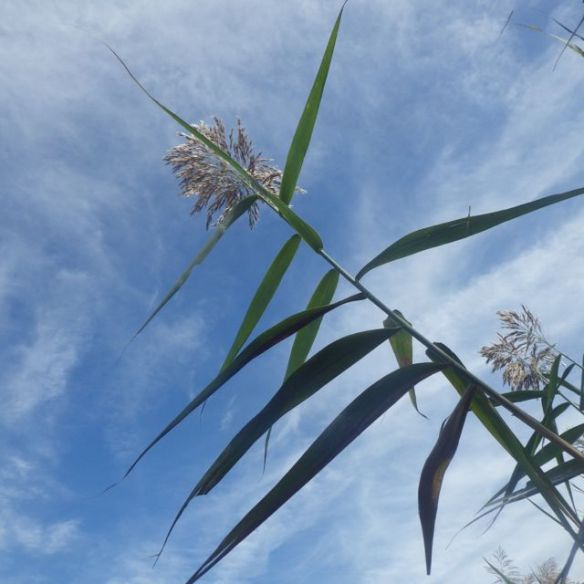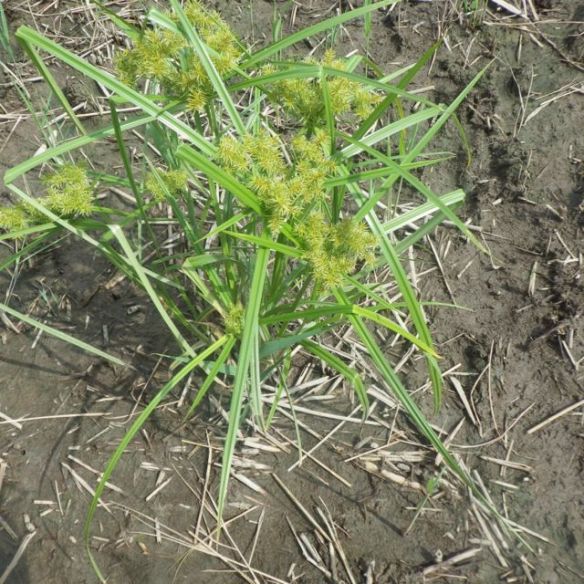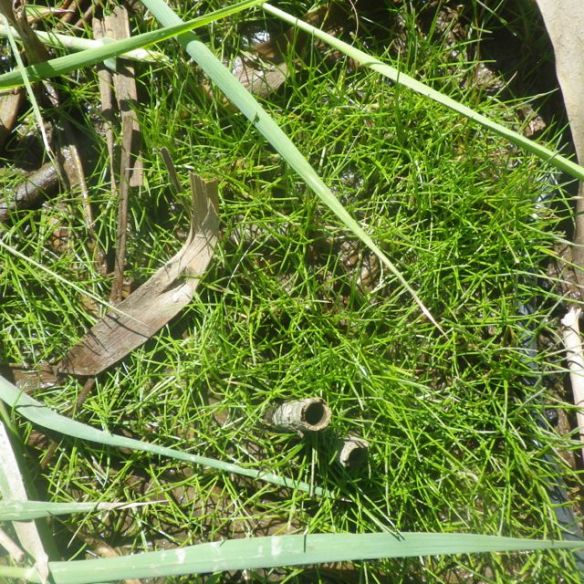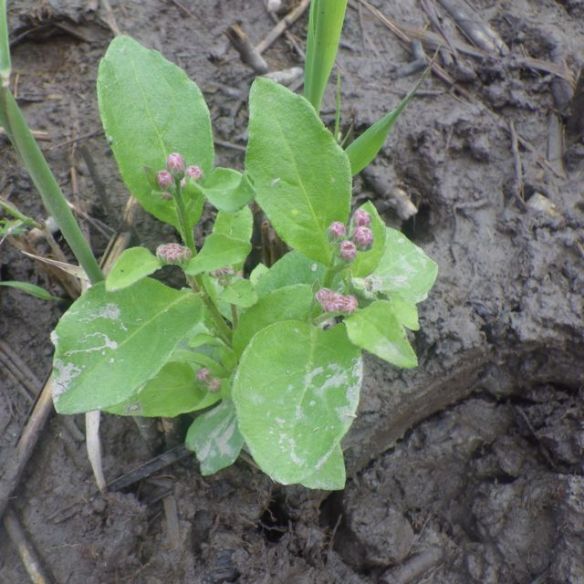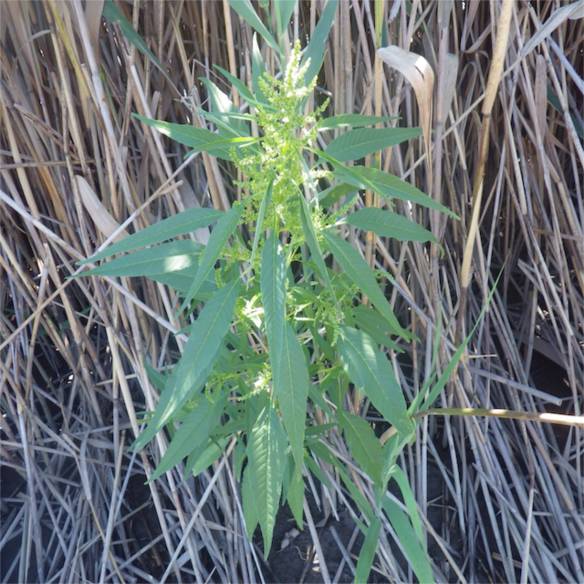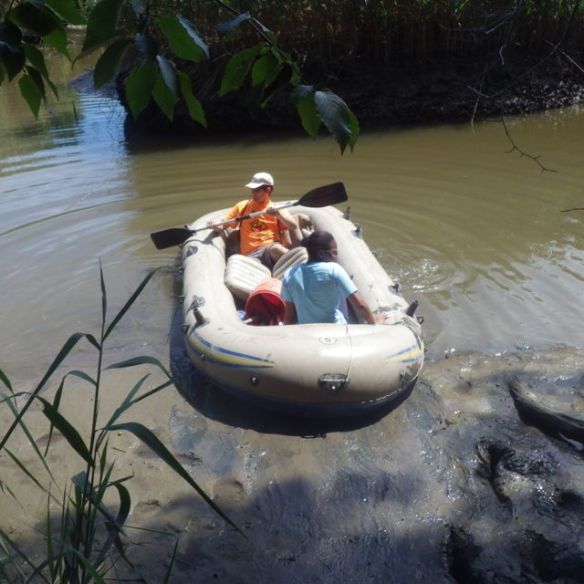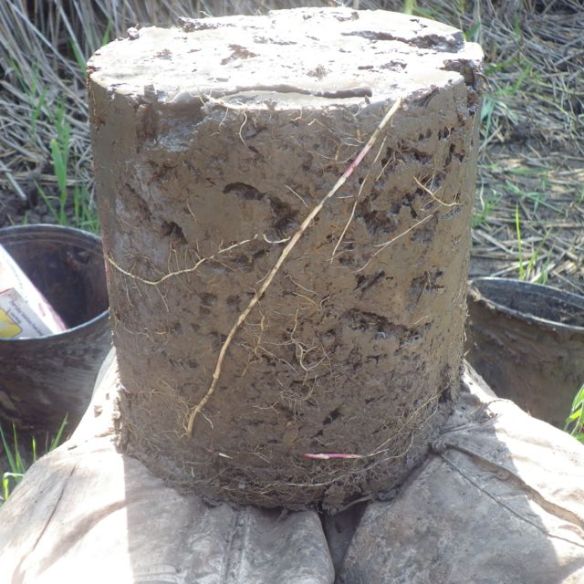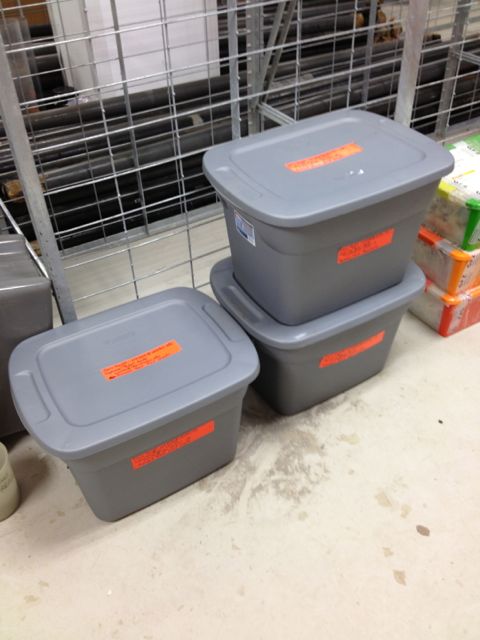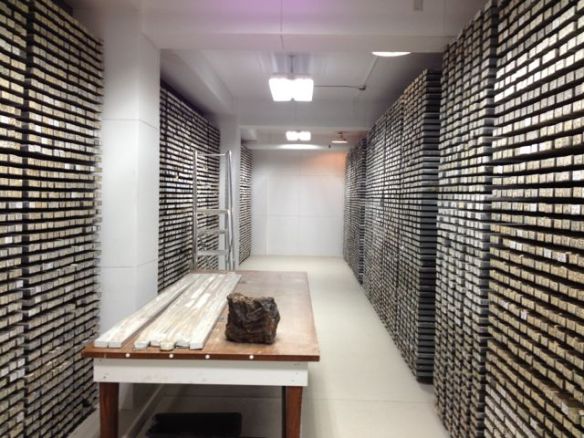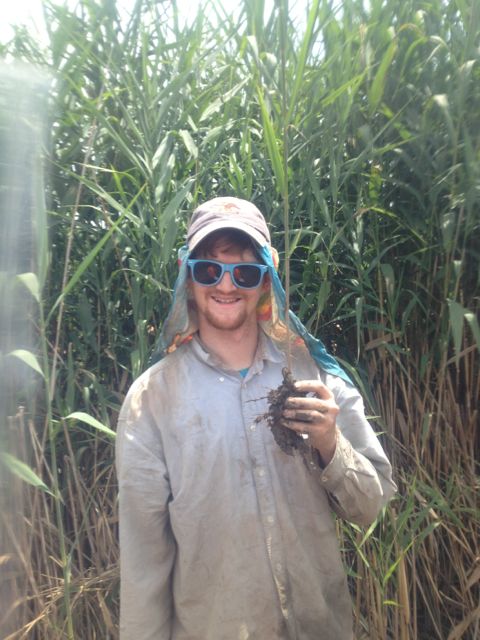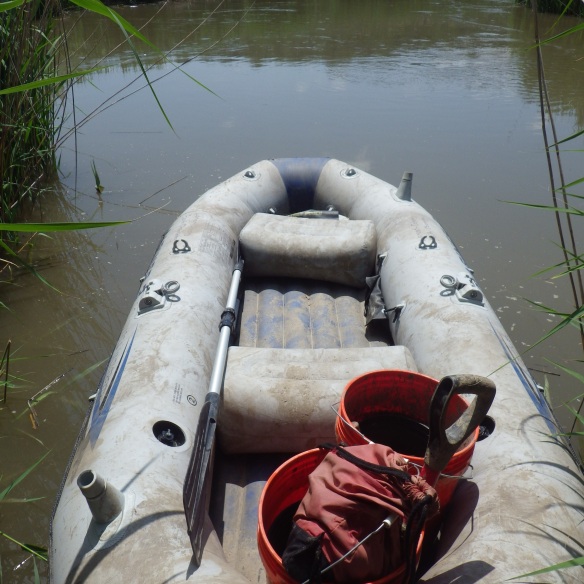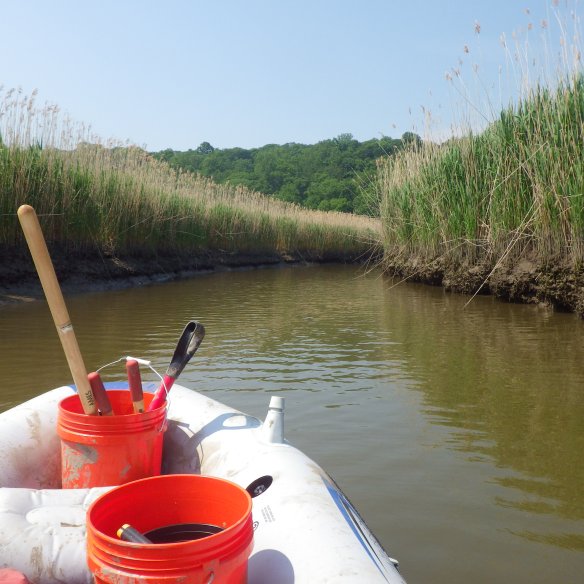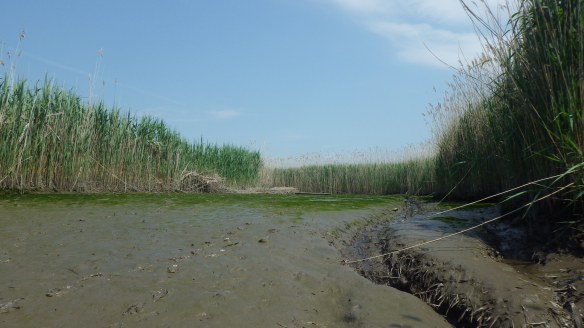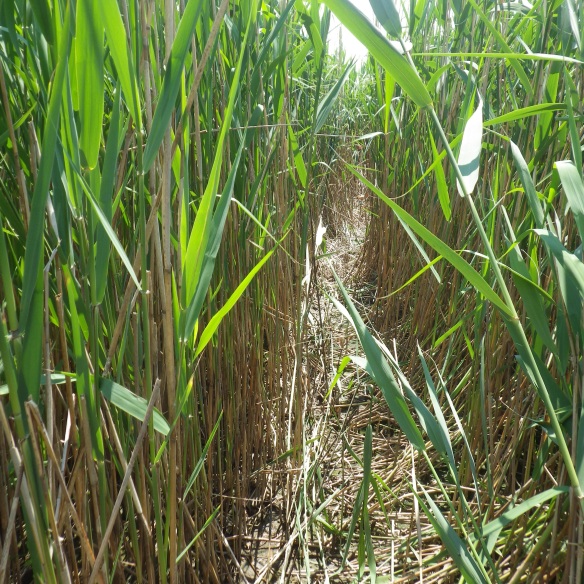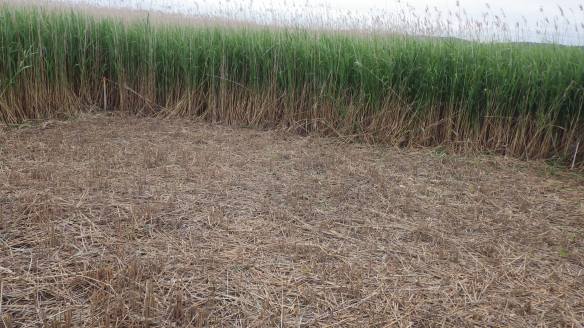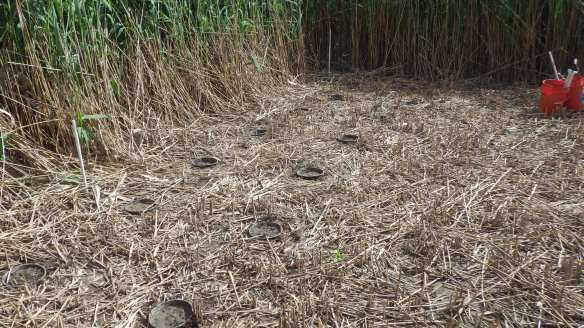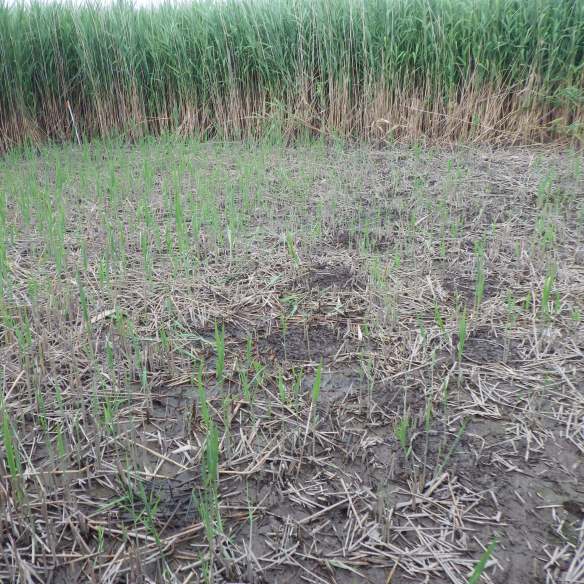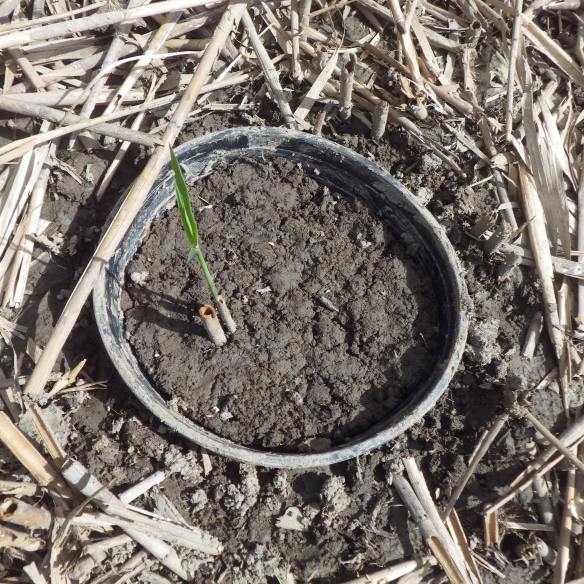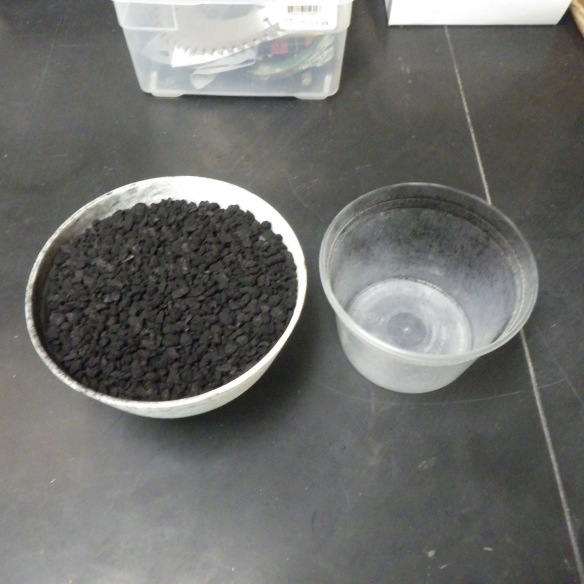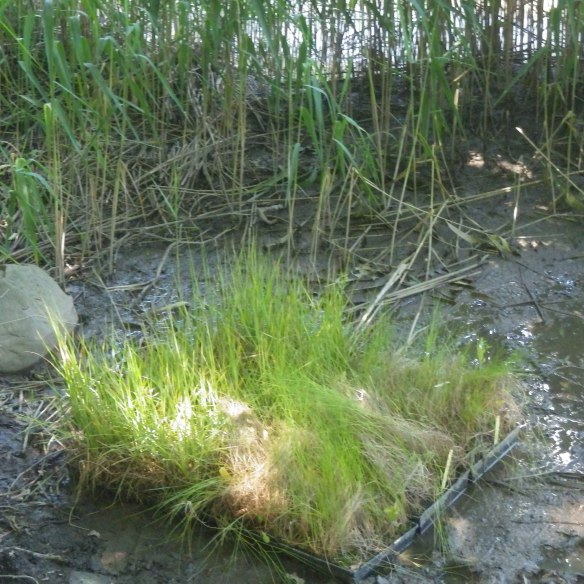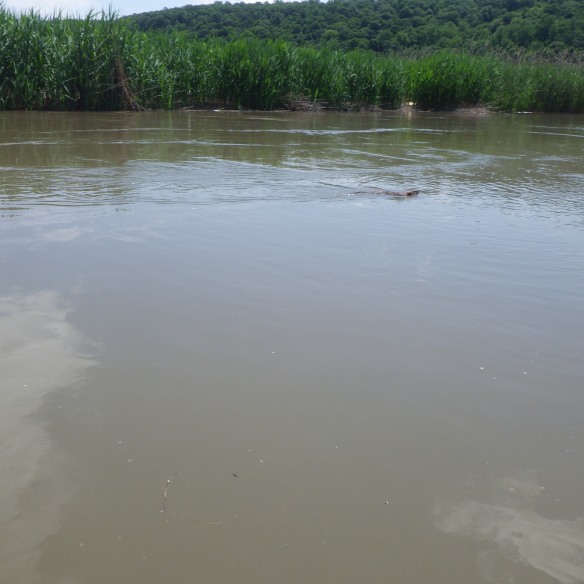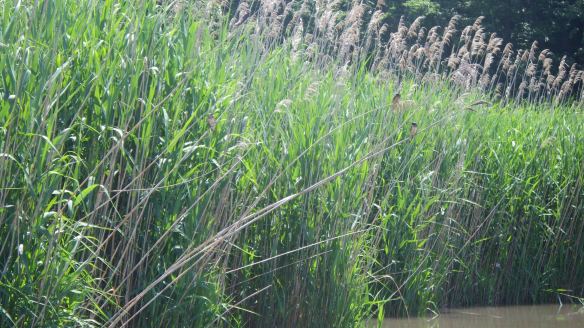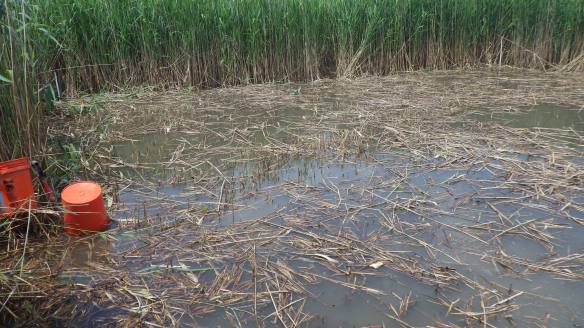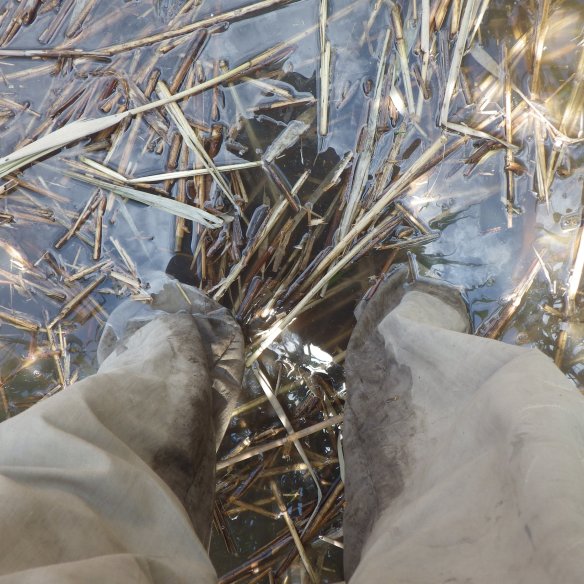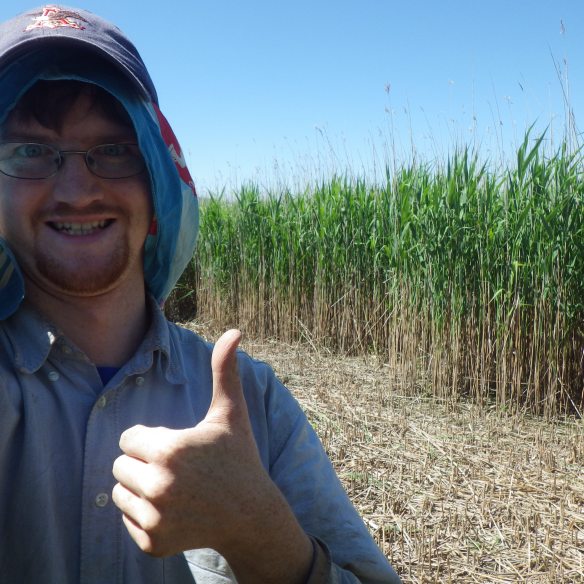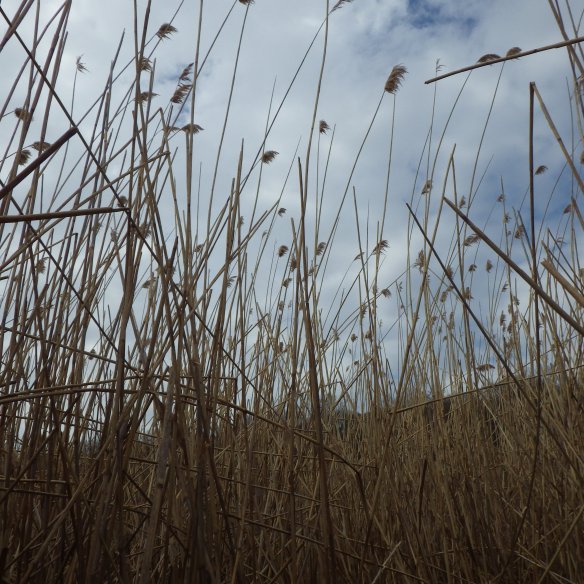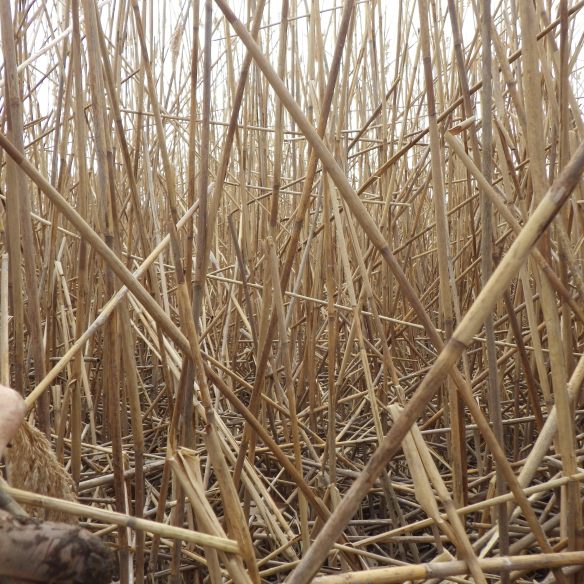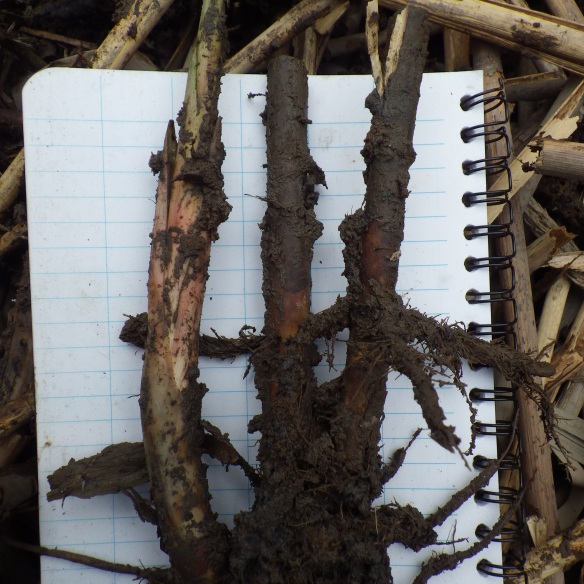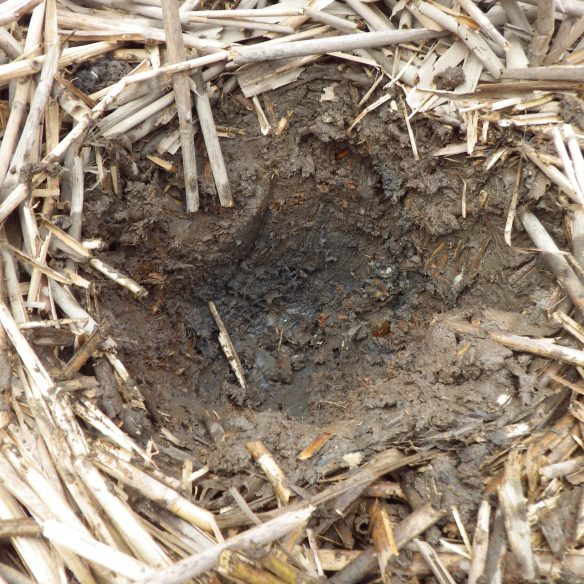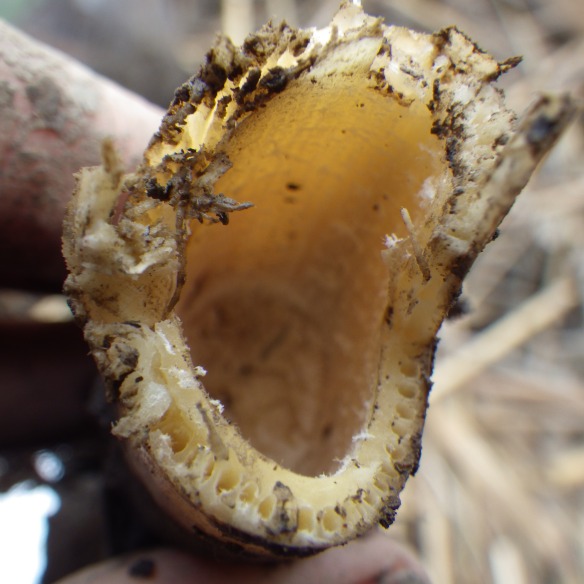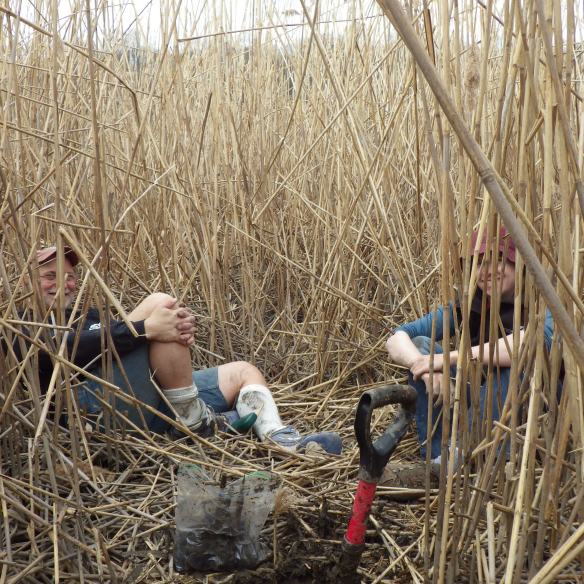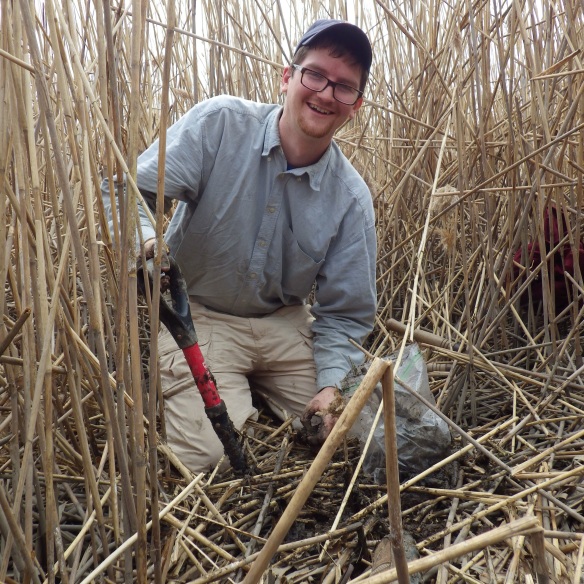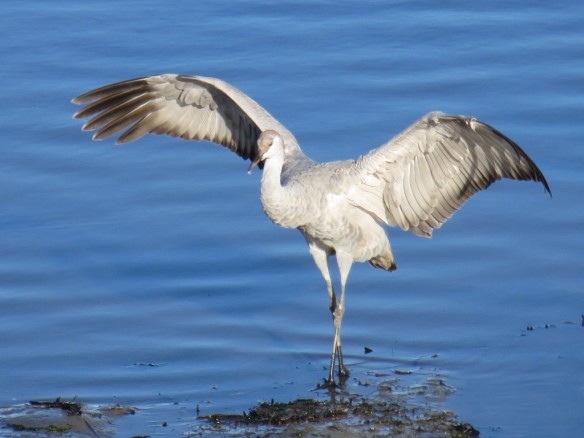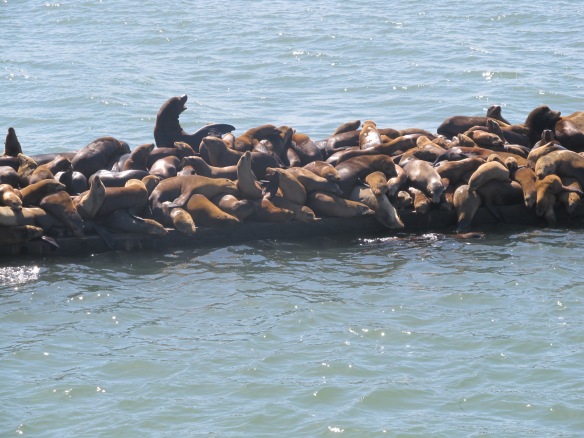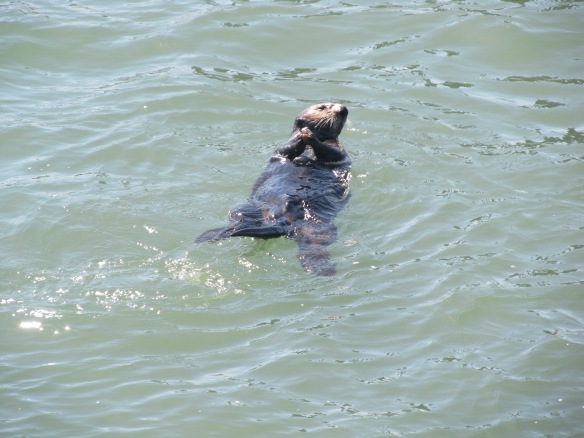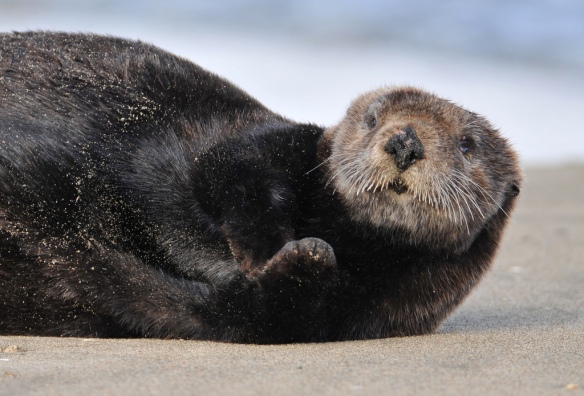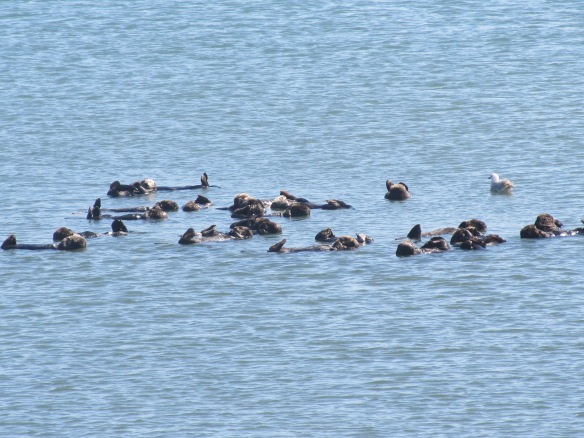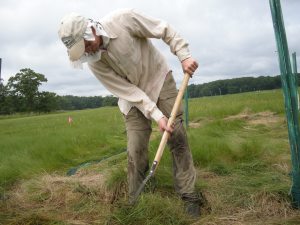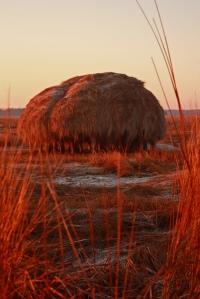Winter has come to Piermont Marsh and the Phragmites australis have senesced. They have drawn their resources down into their dense network of rhizomes below the surface of the marsh where they will await the passing of the cold winter months. The stems will not emerge again until the spring for the summer growing season. What is left aboveground is a phalanx of feather topped lifeless stems ready to take on snow, ice, wind, and water. I too have drawn my resources into the warm interior of the library and my apartment. I have taken all my final samples, collected all of the science infrastructure and detritus I created over the summer, and hauled it all back to Lamont. I have also completed processing all of my plant samples. This entailed washing all of the mud from the roots and stems, measuring the length of the stems, tagging the plants and drying them in a drying oven, and recording their dry weight. The next step is data analysis and testing the soil samples for Gallic Acid. See you in the spring Phragmites.
Belated Fieldwork II
The summer has passed and the leaves of some of the maple trees up at Lamont-Doherty are already showing the red hues of Fall. Last I wrote I was eagerly awaiting the assistance of the high school students in the Secondary School Field Research Program. The students were wonderful young scientists and it was great to work alongside them. With the students help from mid July to mid August, we were able to finish installing all of the pots, add the activated charcoal, plant all the native plants and Phragmites, and clear the plot again of Phragmites regrowth, and again, and again, and again. We also measured the plants as they grew and processed leftover samples to get initial biomass. Everything moved faster with the help of the young scientists and their company made the work much more pleasant. One minute we were discussing research and past fieldwork experiences, and the next we are discussing the arrangement of songs in the film Pitch Perfect, followed by the importance of random sampling in statistical analysis, and on to the chances of the final bachelors remaining on the Bachelorette. The students told me that helping me was some of the hardest fieldwork that they had done, then they asked me if they could join me again tomorrow. The group of students who helped me was lead by two exceptional undergraduate students who, in addition to helping with the fieldwork, made daily coordination of the students and tasks run smoothly. I am excited to read about all of their own research when they become world famous scientists in the near future! THANK YOU!
After the Secondary School Field Research Program ended I was left as a lone marshgoer once again. The plants in my plot were set and grew for 8 weeks. During these weeks the Phragmites surrounding the plot rose to towering heights and in mid August their tops burst, revealing a deep purple flowering fan. Then a few weeks later the marsh surface was covered with Phragmites seed, jettisoned in all directions from their flowers whipping in the wind. Time also allowed for a handful of other plant species to sprout in my plot, these included Cyperus esculentus (Yellow Nutsedge), Eleocharis parvula (Dwarf Spike Rush), Pluchea odorata (Saltmarsh Fleabane), and Rumex maritimus (Golden Dock). I also once noticed, in a few of my pots, there was a small amount of digging disturbance and a nice paw print of a muskrat. The furry vandal must have been after some of the fiddler crabs that were enjoying the hard siding of the pot to burrow up against. I was glad to see my plot full of life. Another creature that lives out west, on the shear rocky shores of California, made it out to my plot for a visit, my brother. He pitched in for a day and he was great help, I’m sure him being a high school biology teacher had something to do with it.
In the second week of September I pulled all my pots and brought them back to be stored in the Lamont-Doherty Core Repository walk-in fridge to become fridge mates with some ancient soils from all over the world. Now I face the task of processing my samples. This entails washing the marsh from the plant roots over a sieve, separating the Phragmites from the Spartina, drying them in a drying oven, and weighing them. I also will wash the plant stems and measure, dry, and weigh them. I have also taken a myriad of cores from my pots and the surrounding area to be tested for gallic acid. I will let you know how it all goes.
I have to make one last trip out to collect some more cores, clean up my empty pots, and haul in my boats. I had some leftover Spartina, so I have planted it in the center of my now pot-less plot. Hopefully they are established enough to make it though the winter underground. I will have to go back out in the spring and see what the plot looks like. Until then I will dream of laying in a lush expanse of Spartina patens and making marsh angels in the cow licks.
Fieldwork
Next week Lamont Doherty’s Secondary School Field Research Program (SSFRP) begins and a horde of over 20 high school students will be falling head over heals in love with marsh science and fieldwork. The program brings together Lamont scientists, undergraduate students, graduate students, and high school teachers and students to monitor and study the physical and biological life of Piermont Marsh. There are teams lead by undergraduates and teachers that focus on subjects including fish, plants, nutrients, carbon, and marsh elevation. I have the privilege of leading a team of my own to help with my project focusing on competition and allelopathy in the invasive plant species Phragmites australis.
Since the beginning of June I have been getting my project up and running. My first task was to figure out how to get out to my site, which is located on an oxbow island at the end of the Crumbkill creek in the middle of Piermont Marsh. After discovering that walking was out of the question I purchased some heavy-duty inflatable boats and ventured down the creek to the oxbow. After wandering around the island, through dense stands of still standing dead Phragmites mixed in with new growth, I marked off a 10m by 10m square to call my site. Over the next week or so I clipped all the Phragmites down to the peat, leaving an open square plot.
Once the plot was cleared I began installing pots into the peat. This entails digging out a hole and collecting the removed peat, fitting a 3-gallon pot into the hole, and placing the peat into the pot while removing rhizomes and large roots. There will be 10 rows of 10 pots for a total of 100 and they are all 1 meter apart. So far I have installed 70 pots. I have also started to plant Phragmites (small successional individuals taken from the cleared plot) into randomly assigned pots.
Our team should be able to finish installing the pots within the next week and then we will begin adding the activated charcoal to half of the pots and planting the native Spartina alterniflora and Spartina patens, which I have received from the Greenbelt Native Plant Nursery in Staten Island. We will then monitor the growth of the plants for several weeks and take soil samples to analyze for gallic acid (a known Phragmites allelochemical) before extracting the plants to be processed for above and belowground biomass.
While the process has taken longer than I expected due to vehicle troubles, poor weather conditions, waiting on deliveries, and me being one person, I am happy the project is progressing and very excited to work with the students starting next week! It has also been a delight to go out on the marsh almost every day over the past month. I have seen many birds (swallows, red-winged blackbirds, herons, and ducks), mammals (deer, muskrats, and a woodchuck), snapping turtles, snakes, and many brood II cicadas! It is quite the experience to start the day riding the subway with hundreds of other people and then an hour later to be alone in a creek surrounded by dense vegetation and vibrant wildlife. I cannot wait to share that experience with my fellow young scientists!
Management Considerations for Restoring Phragmites australis Dominated Wetlands
Invasive species management can be a tricky endeavor, especially when you are dealing with such a pugnacious species as Phragmites australis. Invasive management seems like it has a straightforward approach; you have a problem – the invasive species – and the solution is to get rid of it. But, whenever you are dealing with any organism, it must be recognized that it is just one piece of a large ecosystem that is comprised of an intricate network of participants, processes, and their interactions. The simple addition or removal of one piece can change the workings of the whole system. Management efforts need to be based on the understanding of the ecosystem as a whole, which means there needs to be an understanding not only of the invasive species, but also the role of that species in the greater ecosystem. In addition, the feasibility of the restoration project needs to be assessed by understanding the ability of the native state of the system (species, processes, and interactions) to return after the eradication of the invasive species. Without this knowledge the management goals may not be achieved and the system could remain invaded or even further impacted.
The Case of the Common Reed:
Phragmites australis is a clonal wetland plant species, meaning that a single plant is made up of many clones or nodes connected by an underground structure called a rhizome. In the United States, there is a native form, which has been around for thousands of years, and there is an invasive form, which has only been around for just under 200 years. These plants form dense colonies in wetlands that they invade by seed or rhizome establishment and vegetative growth. They expand underground through their rhizomes and move across the wetlands, outcompeting the other plant species for nutrients, space, and sunlight. Today, many marshes in the northeastern United States are dominated by Phragmites and it is a major management issue. But, before remediation plans are made, Phragmites needs to be examined in the context of the ecosystem that it inhabits.
Phragmites australis affects marsh ecosystems in several ways. It reduces the biodiversity by ousting many plant and animal species that have been long standing players in the marsh ecosystem. This loss is partially driven by changes in the physical structure of the marsh including increased rates of sedimentation and plant litter build up. This reduces flooding frequency and, along with the high stem densities, reduces the ability of fish, birds, and other wildlife to forage on the marsh surface. However, the heightened elevation of the marsh and its faster rise keep it from the watery grasps of sea level rise, which threatens many marshes with drowning. Phragmites also is excellent at absorbing nutrients from the marsh, which is a vital service, as excess nutrient runoff can be very detrimental to coastal marine ecosystems. The point is that a Phragmites dominated wetland is not without value and it should be treated as a functioning ecosystem, especially when planning a remediation project.
Management action needs to take an ecosystem approach to restoration and examine the system in its current and, if possible, pre-invaded state. This will provide a baseline that can be used as a reference point when evaluating the success of the restoration project. It will also reveal what needs to be improved and preserved in the ecosystem as part of the remediation efforts. There should also be careful consideration for the eradication methods used, as most Phragmites remediation projects use harmful herbicides for removal, while there are more natural methods such as burning, flooding, or livestock grazing. It should also be understood that Phragmites eradication is not a one-season endeavor; it is more of a Phragmites curtailing coupled with long-term maintenance to keep it at bay. Most importantly, the restorability of the system needs to be determined. Research needs to be conducted prior to remediation action to determine the presence of a native seed bank and the ability of that seed bank to yield native plant growth after the removal of Phragmites. Invasive Phragmites is a fickle plant that has claimed its stake in many wetlands in the northeastern United States. In order to return these systems to a state reminiscent of their native past, management needs to look beyond Phragmites to the ecosystem and the role that Phragmites plays in that system. Such an approach will allow for the restoration of the whole ecosystem instead of just dealing with one small piece.
A Trip to Piermont Marsh
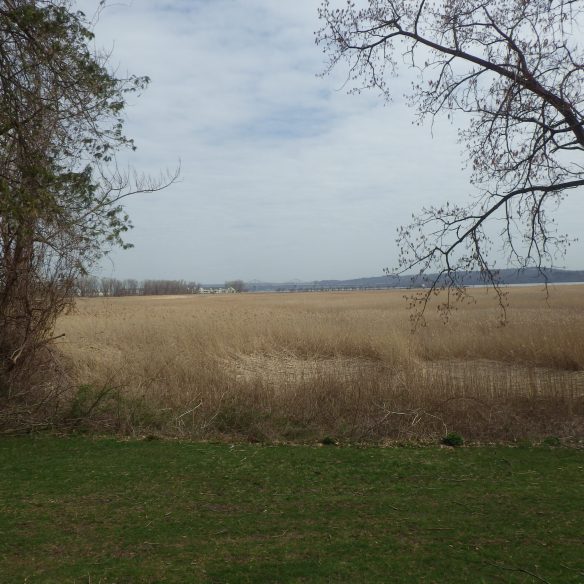
The view of Piermont Marsh from Tallman Mountain Park with Piermont Pier and the Tappan Zee Bridge in the distance.
Last week I took a quick trip up to Piermont marsh to poke around a little and get a feel for the mud and brush that I will be dealing with this summer. I also was able to go hobnobbing with Elisa Bone and Bob Newton, the brains guiding my brain. It is remarkable how quickly the landscape changes once you cross the Hudson River and bank a right to head north along the Palisades. The towering glass, concrete, and metal structures are replaced with forest and rocky vistas. Piermont marsh is located below Tallman Mountain State Park, about a 20 minute drive north of New York City on the west bank of the Hudson River. Adjacent to the marsh is the town of Piermont and a pier that juts out into the water with the Tappan Zee Bridge rumbling in the distance. With notebook, camera, and shovel in hand we drove over to Tallman Park from the Lamont Doherty campus. We walked down the hill, climbing around the felled trees strewn across the roads and trails, testaments to the force of Hurricane Sandy. Gazing over the expanse of dead Phragmites from the hill we tried to gauge the best angle to navigate towards my potential site, located on an oxbow island somewhere in the middle of the marsh.
We were lucky enough to find a bridge in an old dead tree lying across the large ditch/creek that separates the land from the marsh. Once we were on the actual marsh we forged ahead through the bramble of dead Phragmites stems, which were all about twice my height and packed in densities of at least a hundred per square meter. Once we reached the creek we followed it for a good while, hoping to come upon the oxbow eventually. The Phragmites was quite difficult to walk through and its tall stature and abundance makes it almost disorienting to walk through as I found myself straining to keep a visual grasp on the creek. After a while I decided we had trudged far enough and we plopped down where we were. Upon closer inspection of the marsh surface, and some removal of detritus, it became evident that there were little Phragmites sprouts making their way to the sun. I took my shovel and dug two up. I was surprised at how much clay and mud was actually present in the peat, as I had expected it to be thick with roots and rhizomes. This should make it feasible for me to embed my pots in the marsh and to clean out the soil of unwanted vegetation. The size of the plant grew the deeper you went and I was not able to reach the rhizome even after digging down to a good half meter. The two specimens that I extracted were the second or third branching from the larger belowground stem of the plant, perhaps revealing the past two growing seasons. After pondering the marsh for a little while longer we headed back to the park. I am excited to start the field season soon!
Science Friends: Trying My Hand/Voice/Ears at Podcasting.
Science Friends Podcast Ep.1: Eric LeFlore UMass Amherst
Photo Trapping the Carnivores of Western Massachusetts
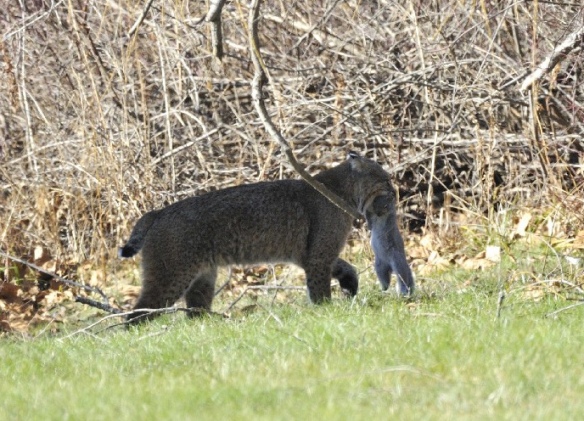
A bobcat with an Eastern gray squirrel in it’s jaws photographed in Amherst, MA.
Credit: Bill Thompson/USFWS
© USFWS – flickr
In a recent lecture and assignment for my Science Communication class with Josh Drew we learned about how to podcast. We had a very informative “basics of podcasting” walkthrough provided by our visiting journalist expert Rose Eveleth and were sent on our ways. Our task was to find an interesting scientist, interview them about their research, and make a podcast out of it. I decided to interview a good friend of mine from when I was in undergrad at Connecticut College, Eric LeFlore. Eric is now a PhD student at the University of Massachusetts Amherst in the department of Environmental Conservation where he is finishing up the Master’s portion of his program before he pursues his PhD.
I interviewed Eric over Skype and I recorded it (with his permission) using a free Skype audio recording app called Callnote. I had actually sent Eric an email with some topics we would talk about for the interview the day before so that he could get some of his thoughts straight. I approached the conversation very causally so that it would be relaxed as possible and I was excited to catch up with Eric and talk about his research and how he was doing otherwise. I was pleased with how Callnote worked and it was very easy to use. I think the audio quality of our Skype conversation was not perfect, but it worked well enough that you can make out what we are saying.
I then used Garageband on my Mac to edit the recordings into the podcast that is now before your ears. I mixed and matched a lot of our conversation and re-recorded myself asking all of the questions. I also edited out longer pauses, ums, and moments when I laughed or randomly exclaimed “MICE!?” for no reason. Our conversation was actually much longer and we talked about a few other topics that I did not include, mostly because the editing was taking me a while and because I was trying to keep it as relevant as possible to his research.
It was a great learning experience and I definitely appreciate podcasts more after seeing how difficult is can be to put one together. I like the idea of Science Friends and I have a few other buddies who I would love to catch up with, so perhaps there will be some more episodes in the future, stay tuned. For now enjoy Science Friends with Eric LeFlore!
Moss Landing State Beach: A Wildlife Bonanza

Moss Landing with the Moss Landing Marine Lab on the right and the power plant on the left. ©mlhradio – flickr
Recently, I visited family in sunny and beautiful Monterey Bay, California. While I was there I discovered Moss Landing State Beach, and soon realized that it is a Shangri-La of wildlife viewing. The beach itself is great, but the access road that circles the rim of the tidal lagoon behind the dunes of the beach, fed by the outflow of the Elkhorn Slough (a beautiful estuary reserve), is where the magic happens. And I really do think there is something magical about it because, in only two trips there, I saw multiple once in a lifetime wildlife phenomena.
Moss Landing is a beautiful and unique place on it’s own. Situated in the middle of Monterey Bay next to where the water leaves the Elkhorn Slough, it harbors not only boats and abundant wildlife, but also a high level of marine research. Two world-class marine research institutes are housed there, the Monterey Bay Aquarium Research Institute (MBARI) and Moss Landing Marine Laboratories (MLML). Just down the road in Monterey and Pacific Grove you will find the actual Monterey Bay Aquarium and it’s neighbor, Stanford University’s Hopkins Marine Station. It is an appropriate research playground where many marine biologists and oceanographers frolic. Lets get back to the State Beach.
First off, the diversity of wildlife is fantastic, especially considering that it is located adjacent to a boat harbor, a highway, and a humongous power plant. The cavalcade of life usually is displayed across the entire lagoon, from the highway turn off down to the end of the jetty and beach at the end of the road. First, are the mudflats, at least during low tide, where there are hundreds of wading birds, egrets, gulls and ducks. There is also a lone tree on the marsh across the road from the flats that serves as a perch for magnificent predatory birds such as a Red-shouldered Hawk or a White-tailed Kite.
Next, there is a sand bar partially covered by the napping sea sausages commonly known as Harbor Seals. On the dune above the sand bar I managed to catch a glimpse of the elusive Sandhill Crane, the first that I have ever seen. The last section of the road over-looks a beach in the lagoon next to the Elkhorn Slough water outflow and jetties. Across from the beach is a small dock that is covered by many loud and restless California Sea Lions, all jostling for a place out of the water and in the sun. Both times that I was there, a large raft of around 30 Sea Otters was floating in the water just in front of the beach. Never have I seen so many sea otters together in one place and so close to shore. These otters also displayed some unusual behaviors.
On my first visit, I observed a sea otter attack and chase a Common Merganser. The bird was first pulled down and rolled in the paws of the otter before fleeing towards the beach with the otter in pursuit. The otter was persistent, even bounding out of the shallow water near the beach on its own four paws, but eventually the otter gave up and went back to deeper waters. On another visit I observed multiple sea otters come out of the water with an adorably awkward walk to lounge on the beach. I was amazed and after scouring the literature I found that I was not the only one to have seen these things happen.
A study from 1988 reported 20 cases of sea otters eating seabirds, all from the Monterey Bay area and in some cases multiple times for one individual. The authors believe this behavior shows the innovative ability of sea otters to develop new feeding techniques and how unique individual otter diets can be. There does not seem to be much more information on this behavior, but it is clearly still happening, even though the otter I observed was unsuccessful. Another study states that sea otters come out of the water fairly frequently in this area and they do so under certain conditions to conserve energy. The authors believe that the otters leave the water when air temperature and water temperatures are decreasing and to escape the wind. The beach behind the jetty at Moss Landing State beach happens to be the perfect resting place out of the cold wind.
I feel very lucky to have seen two extraordinary behaviors happen in one place and I was pleased to find scientific confirmation of these observations. If you ever happen to be in the Monterey Bay Area, I highly recommend that you check out Moss Landing State Beach and who knows maybe you will see something out of the ordinary, like a deer swimming in from the ocean.
References:
Maldini, D., Scoles, R., Eby, R., Cotter, M., & Rankin, R. W. (2012). Patterns of Sea Otter Haul-Out Behavior in a California Tidal Estuary in Relation to Environmental Variables. Northwestern Naturalist, 93(1), 67–78.
Riedman, M., & Estes, J. (1988). Predation on seabirds by sea otters. Canadian journal of zoology, 66.
Ecologically Responsible Pets
I am taking a reprieve from my meddling in salty vegetated mud science to talk about two of my other favorite things, cats and birds. I have always known that cats and birds do not get along, but I did not realize the full severity of this problem until recently. According to a study, published in Nature Communications, domestic cats are estimated to kill between 1.4 and 3.7 billion birds a year in the United States. They are also estimated to kill between 6.8 and 20.7 billion mammals a year and are thought to have caused 14% of bird, mammal, and reptile extinctions on small islands. This makes free- range domestic cats one of the greatest anthropogenic threats to birds and mammals. The majority of these cats are un-owned or strays and dealing with them is a major conservation issue.
There is very little data on the abundance of these un-owned cats and their predation preferences. Consequently, it is hard to determine which species are most vulnerable and where the threat is greatest. This could be a good opportunity for citizen science programs to collect data on cat populations and predation, however it may prove to be difficult as stray cats avoid human presence and cat lover observations may be biased. One of the main conservation hurdles may be cat lovers and their unceasing love for these cats.
The Nature Communications paper points out that pet management policies are based on the welfare of pets and not on the ecological consequences of having those pets. There is also a lack of knowledge about the impacts of pets on wildlife and a lack of research effort to fill that void. While owned cats and pets are a small part of the problem, we have the ability to address it. While looking at a potential pet kitten or puppy to take home, have you ever thought to yourself, what impacts will this sweet little ball of fur have on our neighborhood’s wildlife population? Perhaps we need to start asking ourselves this question and start thinking about an environmentally responsible approach to pet ownership. This could be a simple as limiting or taking away your cat’s outdoor time or keeping your dog on leash in natural areas or on trails. The key will be finding solutions that balance animal welfare with reduced ecological impacts.
The bigger problem is in the stray and feral cat populations. There are many cat sanctuaries, colonies, and advocacy groups that use humane management practices to concentrate cat populations together and attempt to keep them in one place. There are also Trap-Neuter-Return programs that try to reduce free-ranging cat population growth, however it is a controversial issue and other groups argue that it is not effective and inhumane (see Audubon writer controversy links below). Ultimately, the biggest issue is the lack of research and data on the abundance and impact of these un-owned cats. There needs to be much more research to understand these free-ranging cats and to determine sound management solutions.
The findings from the Nature Communications study are rather shocking and I have been thinking about how responsible my family and I have been with pet cats over the years. There has been a cat in my life as far as back as I can remember, tallying to a total of 5 over my 24 years. Most of these cats were adopted from our back yards and soon became lethargic lap warmers and purring bed pillows. We still would let them out whenever they wanted and I do remember on occasion being surprised to find them with a mouse or lizard in their mouth. Today there is only one feline in my life and for the past few years he has not been allowed outside due to my mother’s fear of him being eaten by our neighbor’s dogs. I used to think this was ridiculous and that a cat should be allowed to go outside and roam free, but perhaps it is best to keep him inside, at least for the sake of the birds and mammals of our yard.
Reference:
Loss, S. R., Will, T., & Marra, P. P. (2013). The impact of free-ranging domestic cats on wildlife of the United States. Nature communications, 4, 1396.
Audubon Writer Controversy:
New York City Marshes
The New York City area is not known for its beautiful salt marsh areas, but I promise you, they do exist. Before the arrival of our European ancestors, the New York coastline had a healthy fringe of squishy, muddy, and vibrant salt marshes. Today, the majority of this habitat is gone and the slivers that survive today are in need of some attention. In light of recent extreme weather patterns, the importance of coastal habitat has received much-needed media coverage. This brought about proposals to incorporate a little more green to the toothy grin of lower Manhattan. But before we indulge our dreams of ripping up that parking lot and paving a new paradise, we should focus on what already exists.
Jamaica Bay is a large marsh system on the backside of Brooklyn and next to Far Rockaway that has been crumbling for years. Researchers and managers have been scrambling to understand this rapid loss to no end. Luckily Jamaica Bay has garnered support from the City of New York and its surrounding community to restore and preserve it. There are restoration sites on existing or remnant wetland habitats throughout the 5 boroughs. Columbia University even has a small salt marsh restoration project, called the Boathouse Marsh, on the Harlem River adjacent to the athletic facilities and Inwood Hill Park.
Restoration work is not cheap in cost, time, or labor. Usually a restoration project will involve rebuilding of the marsh soils through dredging and replacement of sediment onto the marsh and in some cases a channel will need to be re-established to increase tidal exchange. The key ingredient is vegetation, usually in the form of Spartina or other native species, replanted in high densities. Plants can be brought in from other healthy marshes nearby that have plants to spare or there are nurseries that grow and sell plants or seed to grow your own. Plants are key players in the survival of the marsh as they stabilizes the peat through their root systems, capture sediment by slowing down water flow, and provide food and habitat for many other important organisms such as invertebrates, fish, and birds. These restoration projects take a good amount of time to implement and they require constant checkups and monitoring long after the restoration work is done to ensure that they remain intact.
While the grandiose plans to extend lower Manhattan by a few blocks to install a salt marsh and build floating marine vegetation islands to absorb the brunt of storm surges is valid and important to the future of New York and its natural landscape, it is also important to focus on the marshes that already exist. It seems like New York is off to a good start and is headed in the right direction.
Additional resources:
Salt Marsh Haying
One of my least favorite activities on the marsh is the clearing of vegetation using a contraption affectionately known as the Idiot Stick (a serrated weed cutter). It is grueling work and you feel terrible cutting away the marsh plants. It amazes me that over 300 years ago people would clear and harvest acres of salt marsh hay (Spartina patens) by hand. During colonial times salt marshes were seen as potential pastures for livestock but they kept sinking into the soggy peat and getting stuck. They tried to drain the marshes by digging ditches from the creeks into the interior of the marsh, but the livestock continued to get stuck.
Instead, they started harvesting the hay and used it as animal feed and bedding. The grass was hand cut using scythes and the hay was stacked on top of log post stuck in the marsh to keep it elevated from the tide as it dried. Once the hay was dry it was collected during high flooding tides using flat boats called gundalows. In winter horses were used to collect the hay after the marsh surface had frozen. Salt marsh haying is still practiced today, although it is very rare, and the hay is used as weed free garden mulch. The technology has also improved to allow for tractor pulled cutting blades.
Haying has interesting implications for the salt marsh ecosystem. Repeated clearing keeps Spartina alterniflora from encroaching on Spartina patens communities. This shows the resilience of Spartina patens to frequent disturbance. The clearing opens up the marsh surface to foraging fish and birds seeking exposed invertebrate prey. However, harvesting means less production export in the form of plant detritus and less marsh accretion from lower sediment capture and detritus buildup. It is such a rare practice today that its impact has little effect on the greater marsh community.
Marsh hay farmers hold valuable local ecological knowledge that can be useful for understanding salt marshes. It is like having hundreds of years of background data on the marsh ecosystem and first hand knowledge of the implications of human disturbance. They also have valuable knowledge of the invasive species Phragmites australis including when it first appeared on marshes, expansion patterns, and hypotheses for how it came to dominate. Researchers and managers can use this information to formulate more comprehensive studies and management practices that take into account historical prospective. While running a tractor over the marsh and cutting away most of the vegetation does not sound like the best thing for the ecosystem, it is important to remember and preserve these practices so that we can understand the historical and cultural value of salt marshes.
Resources:

